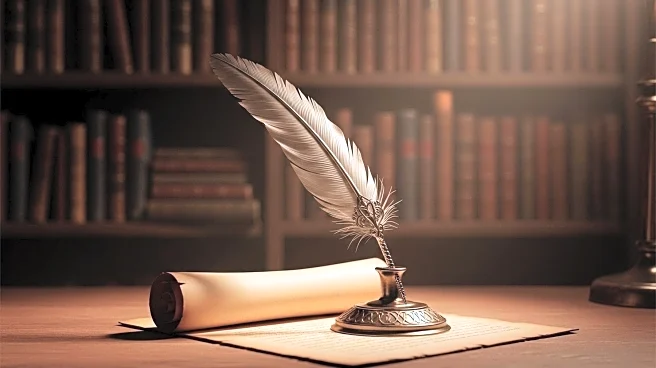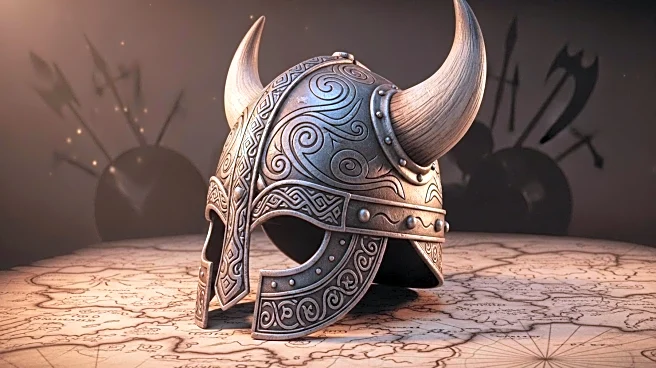What's Happening?
Nathan Hale has released the 13th volume of his graphic novel series, Nathan Hale's Hazardous Tales, titled Bones and Berserkers: 13 True Tales of Terror from American History. Published by Abrams Fanfare, the book features a collection of stories that delve into dark and chilling events in U.S. history. The series, which began in 2012 with One Dead Spy: A Revolutionary War Story, has sold over two million copies worldwide. Hale's work is known for combining historical facts with humor, making it appealing to middle-grade readers. The latest installment includes supernatural elements and an adaptation of an Edgar Allan Poe story, marking a departure from strictly historical narratives.
Why It's Important?
The release of Bones and Berserkers highlights the growing interest in graphic novels as a medium for educating young readers about history. Nathan Hale's ability to blend humor with historical facts provides an engaging way for children to learn about significant events in American history. This approach not only entertains but also informs, potentially fostering a deeper interest in historical studies among young audiences. The success of the series underscores the demand for innovative educational materials that cater to the interests and reading habits of younger generations.
What's Next?
Nathan Hale plans to continue his Hazardous Tales series with a 14th volume focusing on World War II, specifically the European Theater and the fall of Nazism. This upcoming book aims to tackle complex historical themes, providing readers with insights into the end of the war and the collapse of Nazi ideology. As Hale continues to explore different historical periods, his work may influence how history is taught and perceived by young readers, encouraging publishers to invest in similar educational graphic novels.
Beyond the Headlines
The inclusion of supernatural elements and adaptations of classic literature in Bones and Berserkers suggests a shift in how historical narratives can be presented to young audiences. By blending mythology and fantasy with historical facts, Hale's work challenges traditional educational methods, offering a more dynamic and imaginative approach to learning. This could lead to broader discussions on the role of creativity in education and how it can be used to engage students more effectively.












